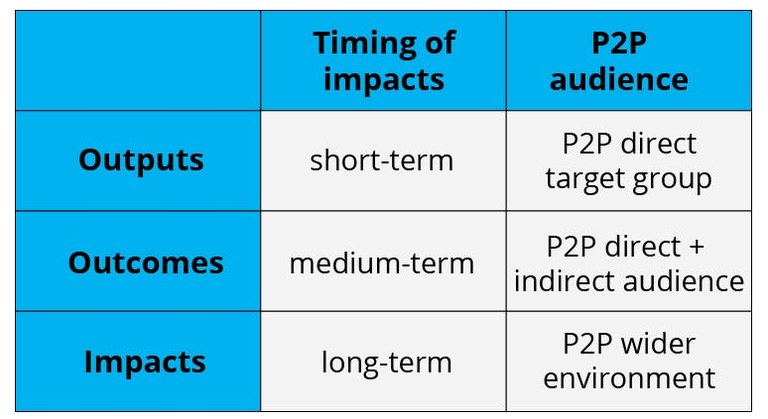Based on the activities a P2P decides to implement, outputs may vary among projects supported under joint calls. These outputs may be joint strategy documents from strategy building activities, training modules for students and researchers or databases with mapped national or regional programmes.
The outputs, along with the growing collaboration amongst the partners and the engagement of the beneficiaries lead to outcomes (or intermediate impacts) that can have an effect on the P2P direct and indirect target group(s). These impacts may be directly associated with the outputs such as improved skills and capacity building from training activities, research results from the projects supported, new collaborations among P2P beneficiaries, etc. Other intermediate impacts may not be directly associated with the outputs but stem from the whole P2P process such as increased trust and improved collaboration among partners, increased awareness of a policy area at national or cross-national level.
Short to medium-term impacts may be strengthened even further by a favourable wider context. They can translate, either intentionally or unintentionally, to long-term impacts on the wider environment of the P2P (society, policy and economy at large). These are called global impacts.
- Outputs are items directly produced by activities (e.g. workshop reports, Strategic Research and Innovation Agendas, databases of programmes, etc.) and are typically produced within the short-term.
- Outcomes (or intermediate impacts) can be defined as the likely or achieved medium-term effects of an intervention's activities and outputs.
- (Global) Impacts can be defined as positive or negative, primary and secondary long-term effects produced by an intervention, directly or indirectly, intended or unintended.
Timing and audiences of outputs, outcomes and impacts

Read more about...


